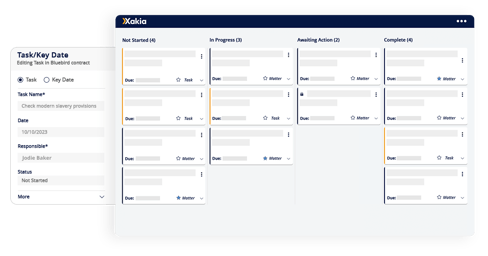If you work in a small Legal Department, you may feel out of the loop when it comes to legal technology. And that’s no surprise, given the vast amount of resources and attention aimed at larger Legal Departments.
But no matter the size of your team, the adoption of legal tech is no longer innovative – it’s expected. Indeed, in the Association of Corporate Counsel’s The State of Corporate Litigation Today, respondents ranked “the ability to adopt new technology” as the most critical non-legal skill for the next generation of legal professionals – more than three times higher than any other option.
It can be hard to even know where to begin. What tools are out there? What should be on the to-do list, and what should be on the wish list? And perhaps most helpful, what are other Legal Departments like us doing?
We’re here to help.

What small teams are really using
First, let’s take a look at the technology in place in small in-house teams.
To gain a true understanding of legal tech in this space, Xakia surveyed 300 legal teams of fewer than 10 people. Respondents represented a variety of industries, roles and team sizes, from solos to teams of six to 10.
What is the “average” small legal team using?
We asked about ten specific types of technology, and four stood out as being used by half of respondents or more:
- Business tools, such as Microsoft Office or Google Suite: 87%;
- Digital signatures, 74%;
- Document management: 57%
- Matter management: 50%.
When it comes to matter management, another 15% said they were interested and have started to search for tools, meaning in the short term, two-thirds of small legal departments could have such software in place.
The fifth tool that is close to the halfway point of adoption is contract management, in use by 46 percent of small teams, with another 18 percent actively searching.
As to the tools with moderate use by small legal teams, we see:
- Reporting and analytics: 34%;
- Legal intake: 32%; and
- Spend management: 25%.
In the “long-term wish list” category, there’s automated document assembly, in use by 18% of respondents, and artificial intelligence, in use by 14%. (While these two had the smallest rate of current adoption, they also had the largest rates of long-term interest, at 51% and 71%, respectively.)
All of this stands to reason.

Business tools are a critical component of getting any work done, and lawyers are sophisticated users of word-based tools like Outlook and Word (and their equivalents). Digital signatures and contract management expedite business agreements, the largest component of legal industry workload.
And matter management is foundational. Again, half the market is using it now, from a standing start of close to zero in 2015. This shift has been rapid, reflecting the pressing need for a management tool akin to those used in every other corporate, non-profit or government department – your peers in Marketing, Finance and IT.
A logical first step
For those who don’t yet have matter management, we expect continued rapid uptake.
Why?
- It makes the most impact. We describe matter management as a foundational tool because it brings every element of the Legal Department together – the people and the projects, the documents and the data. It centralizes everything into a single workspace, so whether you are a team of one or a team of ten, you have visibility into your deadlines, workload, budget and more.
- It’s multipurpose. The right matter management tool can be a hack for so many other applications. Beyond legal matter management, software like Xakia can provide an all-in-one solution for many of those other technology types on the list, including spend management, contract management, reporting and analytics, legal intake, and more.
Not only is it convenient for all of these features to be on one platform, you can rest assured all of the components will work together; no toggling between disconnected software systems, no double-entry of data.

- It’s simple to implement. Because matter management platforms like Xakia are cloud-based, they are built for immediate deployment and use. As a subscription service, there are no costly installation fees or processes, and there are no lengthy contracts or commitments – it’s a month-to-month plan.
Xakia was purpose-built for easy configuration; most legal teams can be up and running in less than an hour. (You don’t even need to call IT.)
- It’s affordable. Unlike enterprise contracts designed for mega-teams, matter management providers like Xakia offer pricing that scales down; you pay only for the number of users you need.
For the half of small teams working without matter management, it’s time to join your peers. Again, the use of legal tech is no longer cutting-edge; it’s table stakes. And with products like Xakia that offer accessibility, affordability and immediate impact, there are no longer any excuses.
 Want to know more? Xakia’s latest white paper,Legal Tech for Teams Under Ten, will help you benchmark against your peers, scout trends, and understand how exactly legal tech is deployed in the small team context.
Want to know more? Xakia’s latest white paper,Legal Tech for Teams Under Ten, will help you benchmark against your peers, scout trends, and understand how exactly legal tech is deployed in the small team context.
